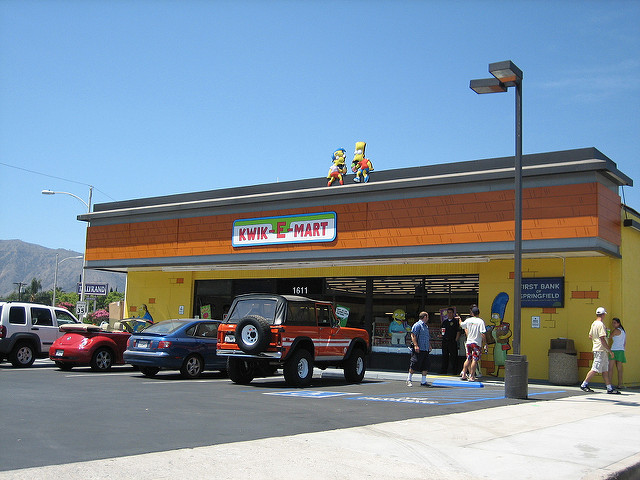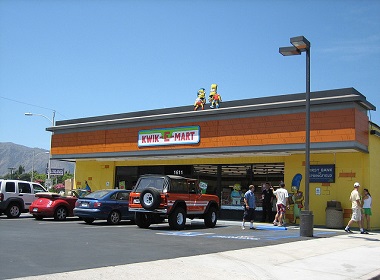Marketing comes in many forms. Since the dawn of the Internet, many of those forms take place online, but what if we told you one of the most effective forms of marketing occurs offline? It’s called experiential marketing, and it’s awesome.
Experiential marketing is marketing that occurs live and in person. It creates experiences for consumers and connects them with a brand in a personal way. It’s marketing that can be seen, heard, touched and felt.
Experiential marketing has a unique set of benefits that make it highly effective. And because it takes place in the physical world, outside the confines of a computer screen, there’s endless room for creativity. Some of the most memorable and successful marketing campaigns in history have been experiential.
Here are five benefits of experiential marketing to inspire your next campaign.
1. Standing out
In a crowded market, experiential marketing can set your brand apart. It’s a break from the ordinary, and people pay attention to that which is different. Almost every brand engages in digital marketing, but many brands don’t do any experiential marketing at all. Position your brand as creative, edgy and unlike the others by including experiential marketing in your marketing strategy.
Example
At trade shows, electronics company Brother brings a robot — not an actual robot, of course, but a human in a robot costume — to walk around the event. It makes Brother stand out at crowded trade shows with hundreds of brands in attendance.
2. Getting the attention of media and influencers
Launching a creative, bold experiential marketing initiative is an effective way to grab the attention of media and influencers. Media outlets love to cover such initiatives, because they’re newsworthy and interesting to audiences. The bolder you are with your campaign, the better chance you have of earning coverage.
Example
In 2012 Red Bull launched its Stratos experiential marketing campaign, in which skydiver Felix Baumgartner broke the world record for highest altitude jump by freefalling 127,851 feet. The media was all over it, and the stunt earned Red Bull tens of millions of dollars in global exposure. It’s an extreme example that few brands could pull off, but it demonstrates the exposure that experiential marketing can earn for brands.
3. Social media exposure
Experiential marketing is “shareable”. People like to share their experiences on social media, and that includes their experiences with brands. As a result, your brand gains free social media exposure. The posts can also be further shared by other users. It’s where experiential and social media marketing meet.
A post shared by E-TV (@etvonweb) on
Example
In 2015, Sprite (a Coca Cola entity) created an outdoor shower resembling a giant soda dispenser and placed them at beaches and other locations. A search of the #spriteshower hashtag on Instagram shows just how much social media users loved it.
4. Allowing consumers to experience your brand and product
You can only learn so much about a brand by interacting with it online. Experiential marketing allows consumers to literally experience your brand, creating an intimate, immersive relationship. Because it appeals to almost all of the senses, it resonates well with people. It’s a whole different way of getting to know a brand that digital marketing cannot emulate.
If your experiential marketing campaign includes your products, even better. When it comes to the buyer’s journey, there’s nothing like trying out a product in person. It’s the best way for consumers to truly know if a product suits their needs before making a purchase decision. In fact, according to a survey by EventTrack, 65% of consumers say experiential marketing helps them have a better understanding of a product or service.
Example
Lean Cuisine’s highly successful #WeighThis campaign featured a wall of scales in New York’s Grand Central Station. The scales weren’t normal scales, however, and instead allowed women to write their accomplishments on them. The campaign allowed women to experience the Lean Cuisine brand as feelings of positivity and empowerment rather than words.
5. Memorability
You want people to remember your brand so they’ll come back to it in the future. Fortunately, experiential marketing is highly memorable. It’s a nontraditional form of marketing that consumers don’t experience in their everyday lives, so it has a lasting impact on them. What’s more, if it was a memorable campaign that the consumer enjoyed, he or she is likely to tell others about the experience in the future.

Example
When the Simpsons Movie came out in 2007, 20th Century Fox transformed a dozen 7-Eleven stores into real-life Kwik-E-Mart convenience stores like the ones in the cartoon. Now that is a memorable experience that gets people talking.
Conclusion
Experiential marketing is too often a forgotten form of marketing. That’s unfortunate, because it’s extremely effective. Branch out and take a risk by incorporating it into your marketing strategy. It’s memorable. It’s shareable. It’s attention-grabbing. And best of all: it’s fun, for both your brand and its customers.

